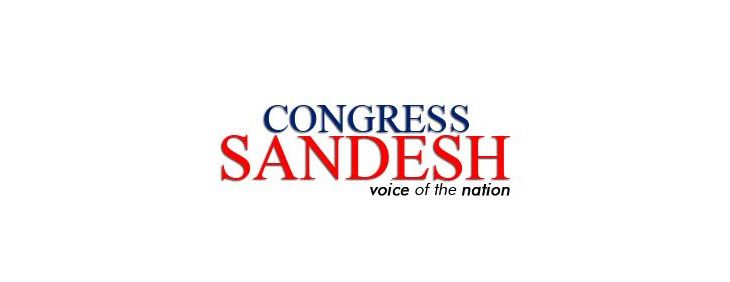Anti-people Taxation Policies of the Central and State Governments

- Shiv Bhatia
India has been undergoing changes which have been especially momentous in the economic and political spheres. India’s resource pool and political institutions’ control, lies with those who engage in actions which leaves the country’s majority, i.e., the workers, small-scale producers, adversely affected. Bhartiya Janata Party’s (BJP) rule in India since 2014 perfectly manifests how the formulation of a populist government proves to be detrimental to the economy.
The economic consequences and overall implications of the ruling government have been devastating. In hindsight, the tall election campaign promises made for the welfare of the people stand false. India’s lowest growth rate of 5% can be accredited towards the fiscal and monetary policies’ failure. Comparing this to the erstwhile UPA Government of 2009-2014, the active range of GDP was of 5.4% to 7.4%. Such progression was maintained in spite of the 2008 global recession. Significant growth was seen in the agricultural sector with food production reaching a record high of 264.4 million metric tons amongst other advancements.
Such feat has not been achieved by the Modi Government and the drastic surge in fuel prices is leading to inflation. Fuel prices have risen over 24 times since May 2021, leading to petrol prices crossing Rs.100 per litre in several States and Union Territories including, Delhi, Rajasthan, Madhya Pradesh, Telangana, Andhra Pradesh, Ladakh and Karnataka, amongst others.
The following factors are influencing the rise in fuel prices: 1. Crude oil, freight and processing charges to the dealer. 2. Value Added Tax levied by the state government. 3. Excise Duty charged by the central government. Crude oil, a sticky and dark liquid which can only be used after refining, is used to make petrol and diesel. For its petroleum products, about 82% of the required crude oil is imported in India. Brent Crude is the benchmark for oil price in India, which is in accordance with the international benchmark price used by the Organisation of Petroleum Exporting Countries (OPEC). The price for Brent Crude stands at $74.65 per litre as on June 16, which translates to about Rs. 5,470 in India. The price for petrol and diesel is revised at 6 am every day and the price of crude oil in the international market directly influences fuel prices in India. As international prices rise, the import cost also increases.
As of June 16, the base (actual) price of petrol in Delhi cost Rs. 37.29 per litre. The central government charges 34% as Excise Duty and the Delhi state government charges 23% totalling to 57% as the tax on the retail price of one litre of petrol. Similarly, the base price for diesel stands at Rs. 39.90 per litre. If the central and state government taxes are added, the taxes make up approximately 54% of the price of one litre of diesel.
A simple comparison between the UPA and the BJP governments’ tenure will make it clear how Modi government is looting people.
In 2013 (UPA government), when petrol price was Rs. 52.15, the central tax was Rs. 9.48, VAT was Rs.12.68, and the dealer was getting Rs. 1.79, making a total of Rs 76.1.
While the BJP government is getting petrol at a much cheaper rate at Rs. 40.12 in July 2021. But the Modi government is charging Rs. 32.9 as central tax, some state governments are charging Rs.23.05, and the dealer is getting Rs. 3.79, making a total of Rs. 99.86.
The price control mechanism of fuel, which was in place under Prime Minister Manmohan Singh’s leadership with UPA, presents stark comparison with the current unruly and immoral situation under Narendra Modi. In 2014, the crude oil price was at $112 a barrel in the international market as rivalled to $62 a barrel now. This should’ve resulted in a rather apparent fall of the fuel prices in the domestic markets as opposed to the pertaining skyrocketing prices.
An almost 400% increase has been observed between April 2020 and January 2021 in which Rs. 89,575 crore has been amassed as excise duty on petrol and Rs. 2,04,906 on diesel. Visionary Prime Minister Manmohan Singh in his attempt to maintain the crude oil stock, had started the Indian Strategic Petroleum Reserves Limited (ISPRL) in 2005. Referring to the 55 lakh metric tonnes of crude oil stocked at the ISPRL facilities, the ruling government refuses to release any stock and give respite to the public from the soaring prices due to its own vested interests.
Some of the other components contributing to the retail inflation apart from fuel price hike is, food inflation which significantly rose to 5.01% in May 2021 from 1.96% in the preceding month, transport and communication at 12.6%, pulses at 9.3% and edible oil at 30.8%.
With a clear understanding of the above data, it can be inferred that while the cost of fuel in India is determined by the international crude oil price, it is just one factor in determining the final price of petrol and diesel. The current surge in petrol and diesel prices are solely because of the anti-people taxation policies of the Central and State Governments.
Author is a Member of AICC







